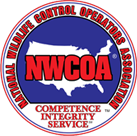BIRDS
Common Concerns & Safety Issues
Large guano deposits, mite infestations, and exposure to salmonella
OUTSMART WINGED NUISANCES WITH PREVENTATIVE
AND DETERRENT MEASURES.
AND DETERRENT MEASURES.
Customers & Locations
Parks
Athletic Fields
Golf Courses
Lake Front Properties
Private Communities
Industrial Sites
Athletic Fields
Golf Courses
Lake Front Properties
Private Communities
Industrial Sites
Business Parks
Townships
County Governments
Boroughs
Schools
Municipalities
Townships
County Governments
Boroughs
Schools
Municipalities
Professional Solutions
- Size screenings and vent covers
- Remove nesting, perching, and roosting ledges
- Sonic and ultrasonic controls
- Visual scares
Understanding
BIRDS
| Grouping | Omnivores, includes many seeds, grains, and bugs. |
| Nicknames | Sparrow, English Sparrow, @#$%^&*! Starling, Black Bird |
| Best Known For | Well-known for decorating cars, sidewalks, and homes with white and purple polka dots. As well as plugging up vents and consuming large amounts of grain. Birds nest in potted plants, behind shutters, wreaths and ornamental light fixtures. |
| Life Span | Sparrow: Up to 3 years on average. Starling: Average of 1.5 years. |
| Mating Season | Sparrow: Spring to early fall. Starling: Spring and early summer. |
| Reproductive Details | Sparrow: 2 to 4 clutches per year, each producing 3 to 7 young. Eggs are hatched in 12 to 14 days. Starling: 1 to 2 clutches per year, each producing 3 to 6 young. Eggs are hatched in 12 days. |
| Dispersal | Young disperse after fledging and are capable of feeding on their own. Fledged birds may appear too young to be living on their own. Often a parent is close by to offer protection and assistance. Fledged birds are incapable of sustained flight and live on the ground for this short period. |
| Habitat | Both are invasive species not indigenous to North America and have adapted to a wide variety of habitats in cities, suburbs, towns, farmland and wood edges. Both are rarely far from humanity. |
| Activity Cycle | Starlings and Sparrows are active during the day all year long.
Starling: During the fall and winter starlings will form into large flocks of 500 plus birds. These "clouds" of birds will twist and contort creating a unique show in the sky. Sparrow: During the winter sparrows band together and are routinely found in low trees and shrubs. They also are common invaders of large structures including barns, box stores, and garden centers. |
| Food | Sparrow: Weed and grass seed, waste grains, insects, spiders, fruit tree buds, flowers, crumbs and garbage.
Starling: Almost equal amounts of animal and plant food. Includes beetles, grasshoppers, ants, flies, caterpillars, earthworms, grains, garbage, cherries and mulberries. |
| Damage Signs | Driving native cavity nesters from nest boxes, destroying native bird eggs, large quantities of droppings, aggressive and noisy presence. Clogged dryer, bathroom, and kitchen exhaust vents due to nesting debris. Birds are known to be a disease vector species. Millions of dollars in damage to agricultural interests and large retail establishments. Starling: In late summer and fall flocks may contain thousands of birds. Starling nests are often very large and in attics. They may appear as a bale of hay and be as tall as a child (5 feet). |
| Treatment | Utilize appropriate size screening and manufactured vent covers to correct dryer, bath exhaust, convection oven, ridge and gable vents. Remove nesting, perching and roosting ledges on homes and buildings. Secure access openings on buildings. Use of fogging agents for starling flock dispersal. Use of food based poisons. Trapping with V-top and colony-style traps. |
| Distinguising Features | Sparrow: Males have black chin and breast patches, white cheeks and a chestnut nape. Females are a drab and dingy brown. Starling: Chunky bird with short, yellow legs and a long, straight, yellow bill. Black coloration with iridescent highlights. In flight they take on a "fighter jet" or triangular appearance. |
| Risk & Disease | Large guano deposits harbor multiple diseases including salmonella. Infestations of bird mites can also occur wherever either species is nesting. Bird mite issues develop into full fledged infestations of houses and businesses. |
| Nest Sites | Cavity nesters and will exploit both natural and manmade holes, gaps, spaces and cavities for nest sites. |


Integrated Wildlife Management is our comprehensive and effective one-stop solution. This approach brings together the six necessary elements to successfully resolve wildlife / human conflicts and when possible, safely relocate wildlife to a more suitable habitat.


